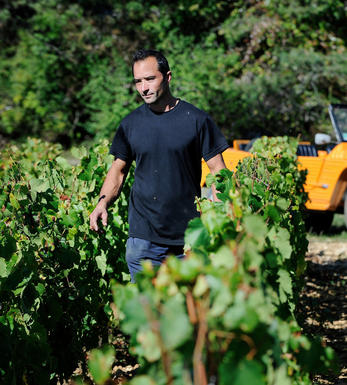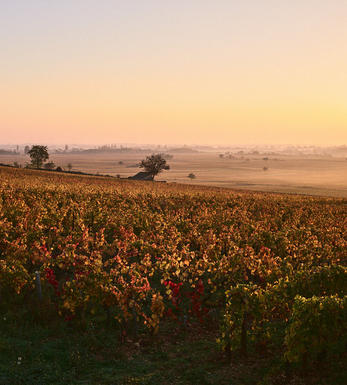
2022 Savigny-lès-Beaune Blanc, Domaine Camus-Bruchon, Burgundy

Critics reviews
The 2022 Savigny-lès-Beaune Blanc Village has a straightforward, clean bouquet with orchard fruit and dried honey. The palate is balanced with a fine bead of acidity and light with a touch of quince and lemongrass on the finish.
Drink 2024 - 2033
Neal Martin, Vinous (November 2023)
About this WINE

Domaine Camus-Bruchon
Domaine Camus-Bruchon is a small, family-owned winery located in Savigny-lès-Beaune, in the Côte de Beaune region of Burgundy. The estate was founded in 1910 by Charles Camus and has been passed down through the generations. Today, it is run by the fourth generation of the Camus family, brothers Laurent and Dominique Camus.
The estate consists of approximately 15 hectares (37 acres) of vineyards, primarily in the Savigny-lès-Beaune appellation but also in the neighbouring appellations of Pernand Vergelesses and Aloxe Corton.
The estate produces a range of wines from Pinot Noir and Chardonnay, including red and white Savigny-lès-Beaune, and Premier Cru and Grand Cru wines from the neighbouring appellations. Traditional winemaking techniques are favoured, including hand-harvesting, natural fermentation, and ageing in French oak barrels.

Savigny-lès-Beaune
Savigny-lès-Beaune is situated within France’s larger Burgundy wine region, celebrated for its intricate terroir-driven winemaking traditions. The village lies just north of the town of Beaune and is known for producing red and white wines, although red wines dominate in quantity.
The reds are primarily made from Pinot Noir grapes, which thrive in the region’s limestone and clay-rich soils. These wines often balance ripe fruit flavours like red cherries and raspberries, earthy forest floor notes, and a refined structure of moderate tannins and vibrant acidity.
The whites from Chardonnay grapes display a refreshing acidity and diverse flavours, from zesty citrus and green apple to more complex hints of hazelnuts, white flowers, and mineral nuances.
Due to its hilly landscape, Savigny-lès-Beaune benefits from a mosaic of microclimates and various soil types, allowing for subtle variations in the wines produced across its multiple vineyards or “climats.” These climatic and soil distinctions contribute to the unique character of each wine, emphasizing the concept of terroir – the idea that a wine’s flavour and personality are intricately tied to its specific place of origin.
The winemakers in Savigny-lès-Beaune are deeply committed to traditional winemaking methods, paying meticulous attention to detail during vineyard management and the winemaking process. Hand-harvesting, careful sorting of grapes, and gentle extraction methods are standard practices, ensuring that the wines reflect the essence of the terroir while maintaining a sense of finesse and elegance.

Chardonnay
Chardonnay is often seen as the king of white wine grapes and one of the most widely planted in the world It is suited to a wide variety of soils, though it excels in soils with a high limestone content as found in Champagne, Chablis, and the Côte D`Or.
Burgundy is Chardonnay's spiritual home and the best White Burgundies are dry, rich, honeyed wines with marvellous poise, elegance and balance. They are unquestionably the finest dry white wines in the world. Chardonnay plays a crucial role in the Champagne blend, providing structure and finesse, and is the sole grape in Blanc de Blancs.
It is quantitatively important in California and Australia, is widely planted in Chile and South Africa, and is the second most widely planted grape in New Zealand. In warm climates Chardonnay has a tendency to develop very high sugar levels during the final stages of ripening and this can occur at the expense of acidity. Late picking is a common problem and can result in blowsy and flabby wines that lack structure and definition.
Recently in the New World, we have seen a move towards more elegant, better- balanced and less oak-driven Chardonnays, and this is to be welcomed.


Buying options
Add to wishlist
Description
The three plots here are east and south facing, in a cool part of Savigny. The freshness is enhanced by half the wine being made in tank, with the other half in new 228-litre barrel. The combination works well, giving a creamy, white-peach attack and a chalky, saline freshness to the finish. This smart, well-made wine offers great value. Drink 2024-2030.
wine at a glance
Delivery and quality guarantee